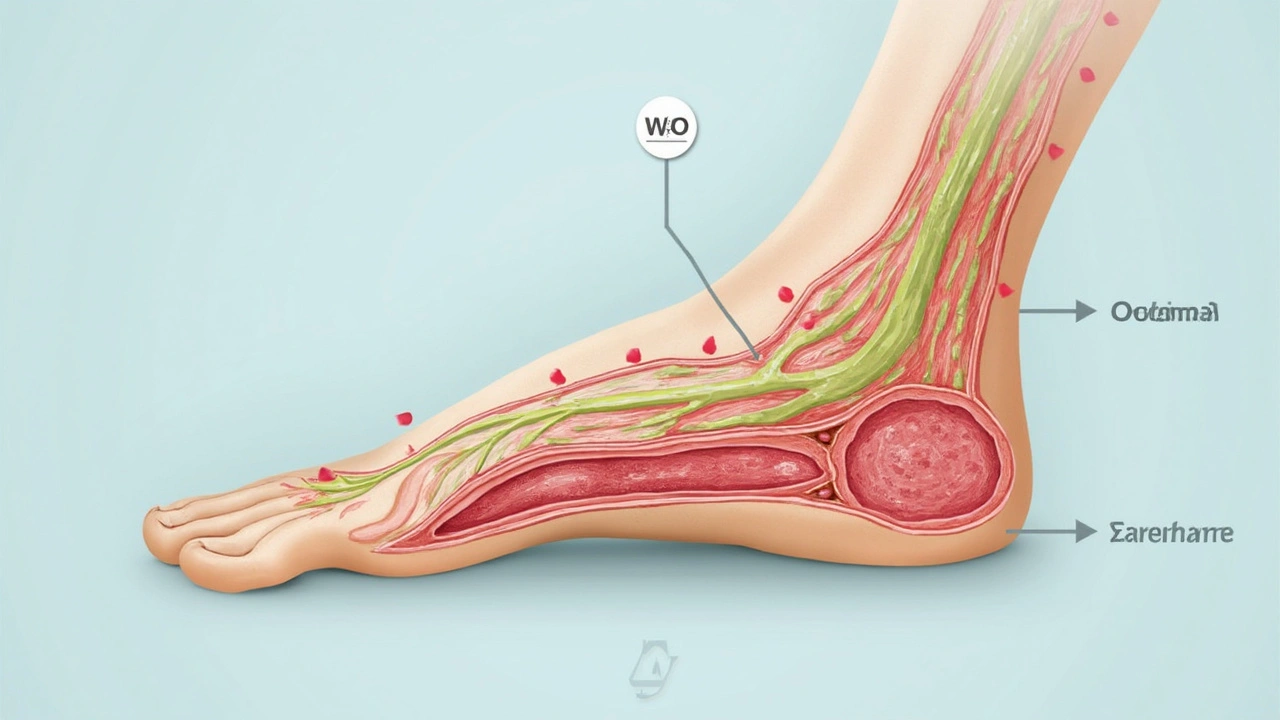Oedema – What It Is and How to Deal With It
Ever notice your ankle puffing up after a long flight or your fingers looking a bit swollen after a salty meal? That’s oedema, the medical term for fluid buildup that makes parts of your body look puffy. It’s not just a cosmetic nuisance; it can signal underlying issues that need attention. The good news? Most everyday cases are easy to manage with a few smart tweaks.
Common Causes of Oedema
Oedema shows up for many reasons. The most frequent culprits are:
- Gravity and standing too long. Your legs and feet hold onto fluid when you stay on your feet all day.
- Too much salt. Sodium makes your body retain water, so salty snacks can puff you up quickly.
- Medications. Some blood pressure pills, steroids, and anti‑inflammatories list swelling as a side effect.
- Health conditions. Heart, liver, or kidney problems can cause fluid to collect in the legs, abdomen, or lungs.
- Injury or infection. A sprained ankle or cellulitis often leads to localized swelling as your body fights off damage.
Knowing the trigger helps you pick the right fix. If you suspect a drug or a serious condition, talk to a doctor. For everyday puffiness, the following steps usually do the trick.
How to Reduce Swelling Fast
Here are simple, low‑cost actions you can start today:
- Move your legs. Stand up, walk around, or do ankle circles every hour. Muscle contractions push fluid back toward your heart.
- Elevate the affected area. Prop your feet on a pillow while you sit or lie down. Aim for the heart level if you can.
- Cut back on salt. Read labels and swap chips for fresh veggies or fruit. Even a small reduction can make a noticeable difference.
- Stay hydrated. Drinking water helps your kidneys flush out excess fluid. Aim for 8 glasses a day unless your doctor says otherwise.
- Wear compression. Light compression socks or sleeves gently squeeze the limb, encouraging fluid to move.
- Try gentle massage. Rub the skin toward the heart using light pressure. This mimics the natural “muscle pump” effect.
If swelling doesn’t improve after a few days of self‑care, or if you notice pain, redness, or shortness of breath, get medical help right away. Those signs could mean an infection, blood clot, or a more serious organ issue.
Remember, occasional puffiness after a marathon shopping trip is normal, but persistent oedema deserves a closer look. By watching your salt intake, staying active, and using simple home tricks, you can keep swelling under control and feel more comfortable in your own skin.
-
24
When fluids accumulate in body tissues, it leads to oedema, a condition that can cause swelling and discomfort. Venous insufficiency, a common cause, occurs when veins struggle to send blood from the limbs back to the heart. This article explores why this happens, what symptoms to watch for, and how it can be managed. We'll delve into practical tips and treatment options that might ease the burden of this common issue.

